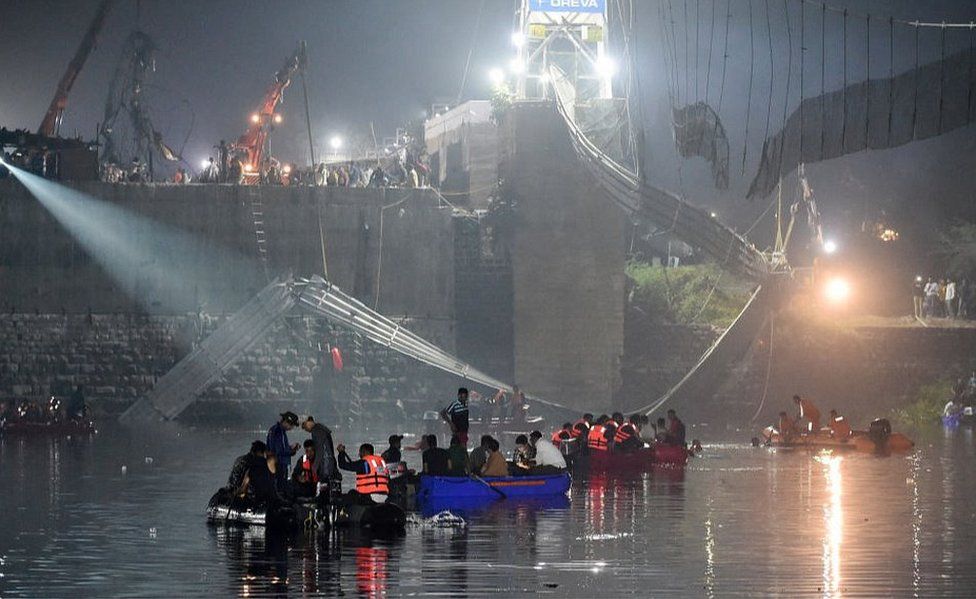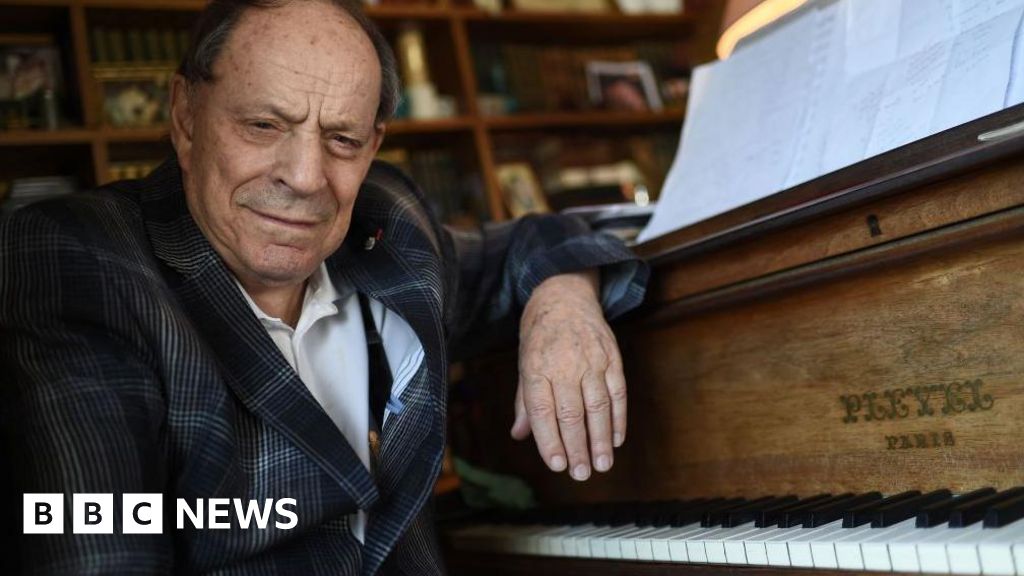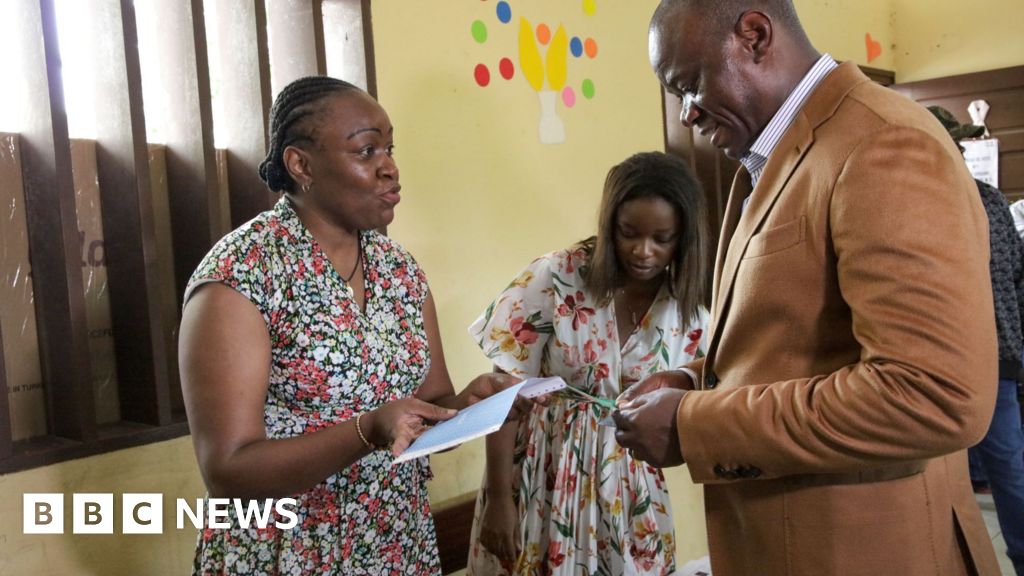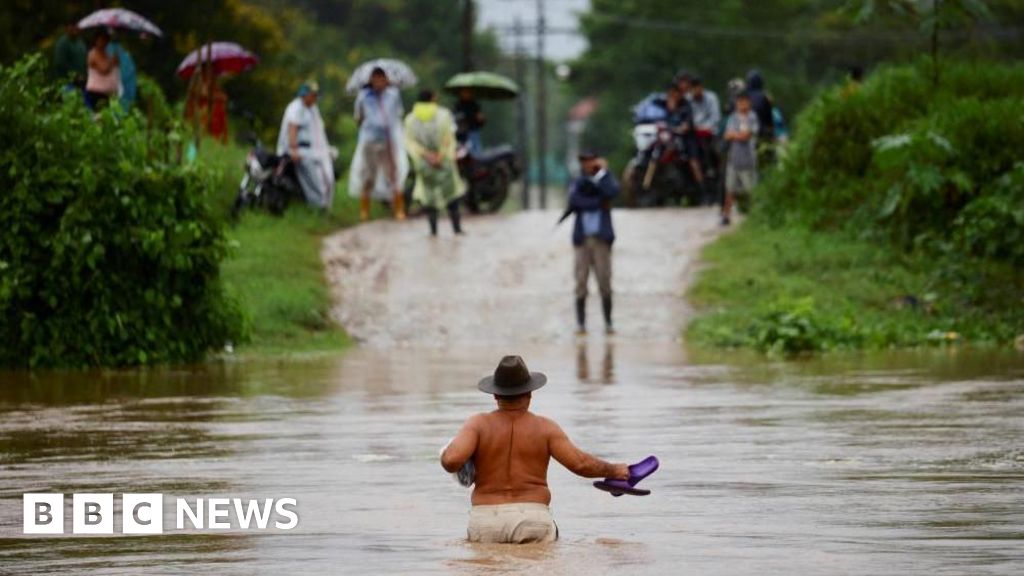ARTICLE AD BOX
 Image source, AFP
Image source, AFP
Scores of people were plunged into the water in the dark
By Geeta Pandey
BBC News, Morbi
More than 40% of those who died when a pedestrian bridge snapped and plunged into a river in the western Indian state of Gujarat on Sunday evening were children, police have told the BBC. Here's why the bridge became a death trap for so many children.
Savita Ben lies on a hospital bed, staring at the ceiling.
The 24-year-old mother of two girls was injured when the bridge collapsed into the Machchu river in Morbi town.
Her two-year-old daughter sleeps peacefully at the foot of her bed, while her five-year-old flits in and out of the room.
Savita, who has an injury on the back of her head, can barely speak, so her cousin Nirmala Ben narrates how the family was caught up in the tragic events of last Sunday.
Savita was part of a group of three women - which included an aunt visiting from another town - and five children.
They purchased the tickets but at the last moment, Savita's five-year-old panicked and refused to get on the bridge "because it was so crowded".
Savita stayed back with her children while the others went on. Once they returned, her aunt persuaded Savita to go with her on the bridge.
"She was reluctant but her aunt raved about the experience so she went, while the third woman waited near the entrance with the children," Nirmala told me.
Savita was found by rescuers, clinging on to the wreckage of the bridge.
She is in trauma and has not been told yet, but her aunt was among the 135 people who died in Sunday's horror.
The family say they are thankful that none of the five children were harmed. But many others weren't so lucky.
A senior police official in Morbi town told me that 56 children had died, including 40 who were below 12. At least one of the victims was two years old. Additionally, 32 women were killed.
Image source, NarendraModi/Twitter
Image caption,Prime Minister Narendra Modi visited Savita Ben in hospital
The colonial-era Jhulto pul (hanging bridge) - described by the state's tourism website as a "technological marvel" - was popular with the townspeople and also a major tourist attraction, says senior journalist and long-time Morbi resident Pravin Vyas.
"High above the city skyline, the bridge afforded a bird's eye view of the town. Children especially loved it because it could sway," Mr Vyas told the BBC.
In the hospital, I also met 18-year-old Mahesh Chavda who was injured in the crash. He told me that the bridge had been his go-to place since he was a child.
"As a little boy, I used to visit with my parents and, for the past few years, I'd go there every Sunday with my friends," he said.
Mahesh says his friends were injured but survived. "We are all in shock. I would never go back there," he said, adding that he didn't think it would be rebuilt.
The bridge - 230m (754ft) long and 1.4m (4.5ft) wide - connected Darbargarh Palace and Lakhdhirji Engineering College. Dates for its construction vary, but locals say it was built in the 1880s by the local Maharaja, Waghji Thakore.
On Sunday evening when tragedy struck, it was packed with locals and tourists who had turned up in large numbers since it was a Sunday and the last day of the weeklong Diwali vacation.
Nirajan Das, a labourer who was working on a temple construction site nearby and was among the first responders to the tragedy, says he lost count of how many bodies of small children he pulled out from the river.
Image source, BBC/Geeta Pandey
Image caption,All that's left of the bridge at Morbi after it gave way on Sunday
The accident is one of the worst tragedies in India in years, more so because the suspension bridge had reopened just five days earlier following repairs.
It had been shut since early March and Oreva group, the firm contracted to maintain and operate the bridge since 2008, had been renovating it. It was thrown open to the public on 26 October, to coincide with the Gujarati new year.
A day earlier, Jaysukhbhai Patel, Oreva's owner, had told a press conference that the renovation work had cost 20 million rupees ($242,000; £211,200).
Praising the quality of the repair work, the machinery and the contractor the firm had hired, he said "nothing will happen to the bridge for the next 8-10 years" and "if used responsibly, no repairs will be needed for 15 years".
Since Sunday's accident, police have arrested nine people associated with Oreva - including two managers and two ticket clerks on its payroll, as well as two contractors and three security guards it had hired. They are being investigated for culpable homicide not amounting to murder.
A company official earlier said the bridge collapsed because there were too many people in the mid-section and some had been trying to make it sway. And in court, one of the arrested managers said the collapse was an "act of God".
But government officials say the disaster is man-made - they have alleged that the firm had hired contractors who were "unqualified" for the job and the repairs had been "shoddy".
Watch: People climb up collapsed Gujarat bridge to escape river
Also, local municipal chief Sandipsinh Zala says that Oreva had not been given a safety certificate before reopening the bridge.
The company is also accused of allowing far too many people on the bridge - eyewitnesses say there were upwards of 500 people on it while its capacity is only 100-150 people.
The BBC has contacted Oreva to ask for its response to the allegations it faces. They have not yet responded to emails and text messages.
Authorities have promised a full inquiry and a special investigation team has been constituted to go into the causes of the disaster.
But town residents and journalists also accuse the police and local authorities of failures.
"If there were thousands of people visiting the bridge every day since it reopened, how can the police and administration say they didn't know about it because Oreva didn't seek permission from them?" asks Mr Vyas.
Hours before the bridge's opening last Wednesday, a journalist from local news website Morbi Update toured the bridge, accompanied by an Oreva manager.
In his Facebook post, the manager is heard describing the structure as "Morbi's aan, baan aur shaan" - honour, pride and prestige.
A few hours later, the historic bridge had snapped, turning into the "bridge of death". Its mangled remains are now a reminder of the horrible tragedy that befell this picturesque town last Sunday, changing its skyline forever.

 2 years ago
21
2 years ago
21








 English (US)
English (US)